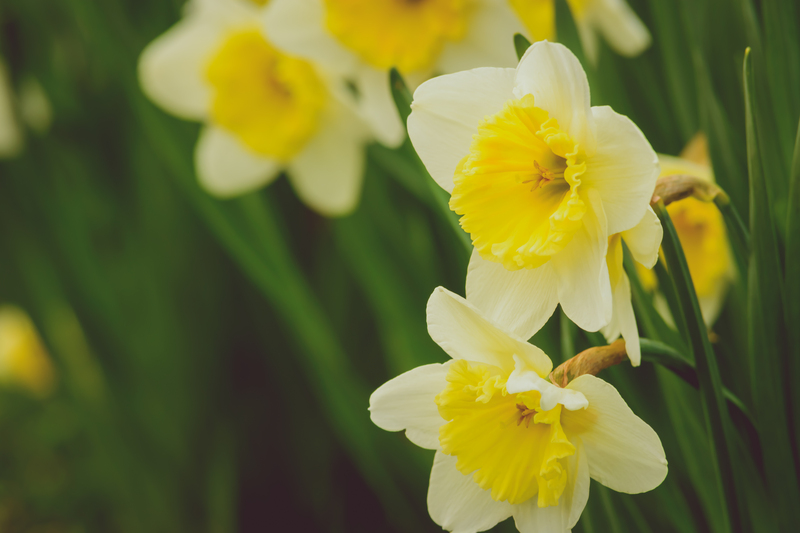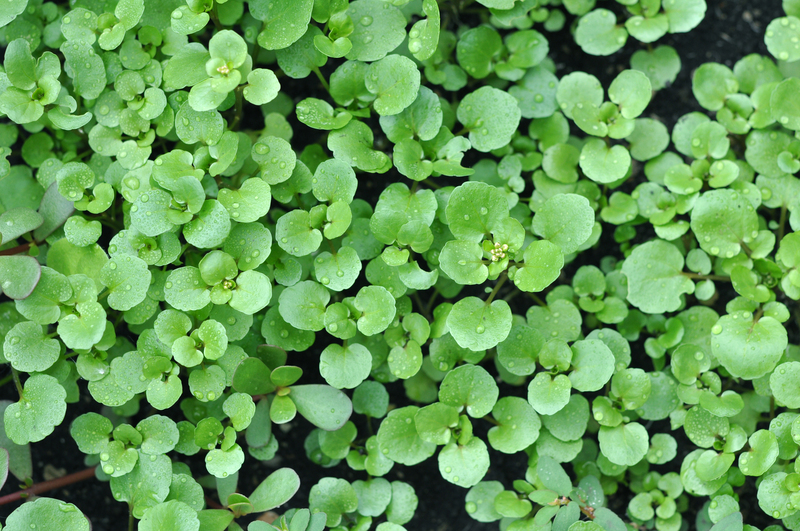Vertical Gardening: Designing Green Skyscrapers
Posted on 29/05/2025
Vertical Gardening: Designing Green Skyscrapers
Vertical gardening is revolutionizing the way cities approach green spaces and urban biodiversity. As populations expand and urban areas densify, innovative architects and urban planners are increasingly turning to green skyscrapers -- living towers wrapped with lush vertical gardens -- to transform city skylines. This comprehensive guide explores the concept, techniques, benefits, and challenges of designing green skyscrapers with vertical garden systems.
Understanding Vertical Gardening in the Urban Landscape
Vertical gardening refers to the practice of cultivating plants on vertical surfaces, often using modular panels, trellises, or hydroponic setups. Unlike traditional horizontal gardens, vertical gardens, or living walls, maximize green space by utilizing building facades and internal walls. This approach is especially crucial for dense urban environments where ground-level space is at a premium.
The Architecture Behind Green Skyscrapers
Green skyscrapers, also known as vertical forests or sustainable high-rises, combine modern architecture with ecological innovation. These structures integrate vertical garden systems into their design, often covering significant portions of their exteriors with plants, shrubs, and even trees. The goal is to harmonize human habitats with nature, enhancing the urban environment both aesthetically and functionally.
History and Evolution of Vertical Gardens
- Ancient Inspiration: From the fabled Hanging Gardens of Babylon to lush palace walls in ancient Southeast Asia, humans have long sought ways to grow plants vertically.
- Modern Innovation: The modern era saw the rise of green wall systems in the 20th century. Patented projects by artists and botanists, such as Patrick Blanc's living walls in Paris, paved the way.
- Going Sky-High: In the 2010s, architects began integrating large-scale vertical gardens into high-rise towers, resulting in iconic structures like Milan's Bosco Verticale and Singapore's Oasia Hotel Downtown.

Innovative Vertical Garden Designs for Skyscrapers
Designing green skyscrapers is a complex process that requires multidisciplinary collaboration. Here's how experts are turning gray concrete into lush habitats:
Key Elements of Vertical Garden Design
- Structural Integration: Green walls must align with the building's load-bearing and wind resistance requirements.
- Plant Selection: The species used must thrive in the climatic conditions of the building's elevation, aspect, and weather exposure.
- Irrigation Systems: Automated hydroponic or drip irrigation ensures optimal moisture without damaging the structure.
- Maintenance Access: Technicians and gardeners must have safe access for pruning, replacement, and system checks.
- Energy Efficiency: Vegetation reduces heat absorption, enhances insulation, and can integrate with solar panels for extra sustainability.
Popular Vertical Garden Systems
- Modular Panel Systems: Pre-fabricated panels are filled with growing media and plants. Easy to replace and maintain, they're widely used for skyrises.
- Felt and Pocket Walls: These systems use layers of felt or stackable pockets filled with soil-less substrates for root anchoring.
- Climbing Green Facades: Vines and creepers grow up tensioned wires, mesh, or trellises, offering a natural, ever-changing green 'skin.'
- Hydroponic Vertical Farms: Integrating food production, these require more technical controls but offer harvestable yields high above ground.
Benefits of Vertical Gardening in Urban Skyscrapers
The impact of vertical gardening extends far beyond mere aesthetics. Here's why green skyscrapers are a key strategy for sustainable urbanization:
Environmental Benefits
- Air Quality Improvement: Plants absorb CO2 and filter dust, toxins, and particulates, leading to cleaner urban air.
- Urban Cooling: Vegetation reduces the heat island effect, lowering surface and ambient city temperatures.
- Biodiversity Preservation: Vertical gardens attract birds, bees, and insects, restoring habitats lost to urban sprawl.
- Stormwater Management: Plant roots absorb rainwater, reducing runoff and mitigating urban flooding.
Social and Psychological Benefits
- Enhanced Well-being: Access to greenery promotes relaxation, reduces stress, and boosts productivity in workplaces.
- Healthier Living Spaces: Indoor air quality improves, and humidity is balanced in buildings with internal living walls.
- Community Engagement: Urban residents often participate in caring for rooftop gardens and vertical farms, strengthening social bonds.
Economic Advantages
- Energy Savings: Green facades insulate buildings, decreasing the need for air conditioning and heating.
- Increased Property Value: Eco-friendly skyscrapers attract premium tenants and boost real estate values.
- Job Creation: New industries and roles in horticulture, irrigation management, and building maintenance are created to support green infrastructure.
Challenges in Designing Vertical Gardens for Skyscrapers
Despite their many benefits, vertical gardens face unique hurdles, particularly when applied to tall buildings:
- Structural Complexity: Additional weight from soil, plants, and water must be carefully engineered for safety.
- High Installation and Maintenance Costs: Premium systems and frequent specialist care can be costly compared to traditional facades.
- Plant Viability: Not all species can survive the harsh winds and variable sunlight conditions found on high-rise exteriors.
- Irrigation Management: Ensuring consistent watering on vertical surfaces, especially during droughts, remains a technical challenge.
- Long-term Resilience: Pests, disease, and harsh weather can take a toll on living walls, requiring ongoing research into best practices.
Case Studies: Iconic Green Skyscrapers With Vertical Gardens
1. Bosco Verticale, Milan, Italy
Completed in 2014, Bosco Verticale ("Vertical Forest") consists of two residential towers covered with over 900 trees, 5,000 shrubs, and 11,000 plants. Designed by Stefano Boeri, this project demonstrates how architecture can support urban biodiversity, mitigate pollution, and serve as a template for future vertical forest projects globally.
2. Oasia Hotel Downtown, Singapore
This 27-story tower redefines the city's high-rise development with 21 lush sky gardens and a "living skin" of over 50 species of climbers. The building conserves energy, supports biodiversity, and offers a vibrant, healthy environment for guests and residents alike.
3. One Central Park, Sydney, Australia
Featuring the world's tallest vertical garden, this residential complex uses hydroponic systems and a unique heliostat to maximize sunlight. Designed by Jean Nouvel and botanist Patrick Blanc, it is an icon of green innovation in modern real estate.
Future Trends in Vertical Gardening and Green Skyscraper Design
- Smart Gardening Systems: IoT-connected sensors will automate watering, nutrient delivery, and microclimate monitoring for healthier plants with less human intervention.
- Edible Skyscraper Farms: Expect to see high-rise vertical farms producing vegetables, herbs, and even fruit in the heart of cities, reducing food miles and improving food security.
- Biophilic Architecture: Emerging building codes increasingly require integrated green elements, recognizing the health and sustainability benefits of greenery.
- Advanced Materials: New lightweight, recycled, and modular materials simplify the construction and upkeep of expansive vertical gardens.
- Hybrid Energy Systems: Future skyscrapers will blend solar panels, wind turbines, and living facades for integrated eco-efficiency.

How to Start a Vertical Garden on a Budget
You don't need a skyscraper to enjoy vertical gardening! Here are tips for urban dwellers looking to green their homes with vertical solutions:
- Small-Scale Living Walls: Install a modular panel or pocket planter on your balcony or patio wall for instant greenery.
- DIY Upcycling: Use recycled bottles, pallets, or cloth shoe organizers to create affordable and creative plant walls indoors or outdoors.
- Herb Gardens: Kitchen vertical herb gardens are functional, space-saving, and add fresh flavors to your diet.
- Climbing Plants: Train easy-to-grow species like philodendron, pothos, or ivy on trellises and window grilles for a low-maintenance urban jungle.
Step-by-Step: Building Your Own Vertical Garden
- Choose Your Location: Pick a wall that receives sufficient light for your chosen plants.
- Select a Support System: Decide between modular panels, pallets, trellises, or fabric pockets.
- Pick Suitable Plants: Opt for low-maintenance, drought-tolerant, or shade-loving varieties based on your environment.
- Install Irrigation: Automated drip irrigation boosts plant health and saves water.
- Regular Maintenance: Prune, fertilize, and clean your living wall to ensure long-term beauty and resilience.
Conclusion: The Skyline of the Future is Green
Vertical gardening is far more than a design trend; it represents a paradigm shift in how we build, live, and thrive in cities. As climate change, urbanization, and environmental concerns challenge traditional architecture, green skyscrapers and living walls offer scalable, beautiful, and impactful solutions.
From the storied vertical forests of Milan to apartment balconies around the world, vertical gardens bring nature back into our urban lives. Whether you're building a plant-covered skyscraper or crafting a home office living wall, you are helping to spark a greener, healthier, and more sustainable urban future.
Ready to be part of the transformation? Explore, experiment, and let vertical gardening inspire your next green project -- and watch your city bloom skyward.
```
